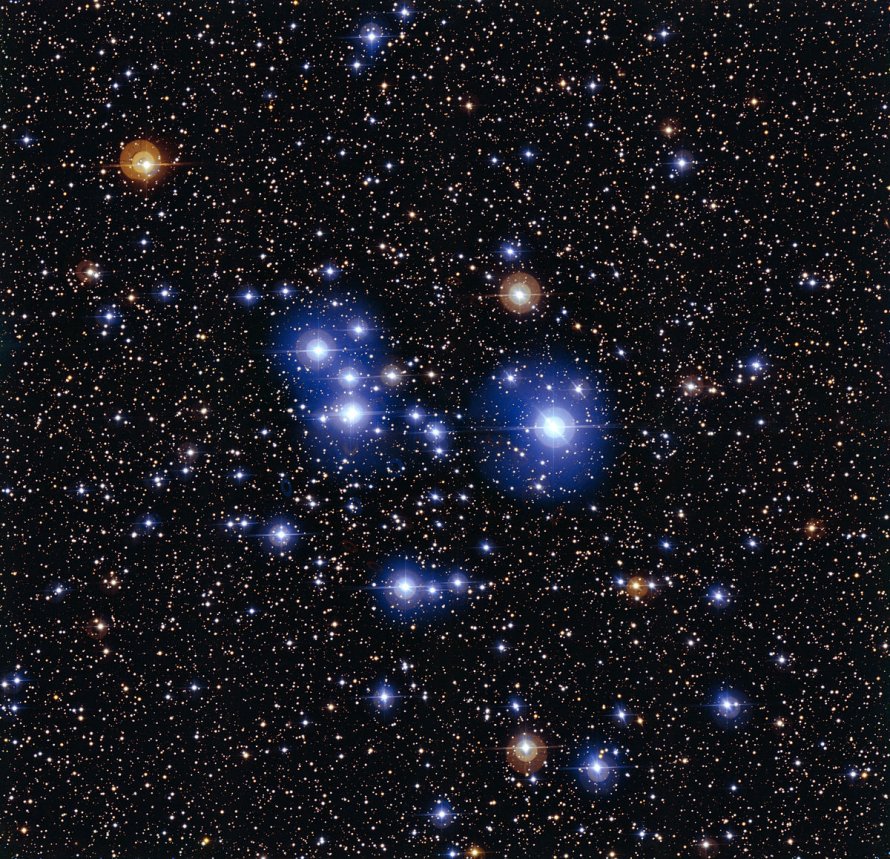M47 (NGC 2422)
Messier 47 (NGC 2422) is an open cluster located in the constellation Puppis, in the Orion Arm of the Milky Way Galaxy in the Local Group of galaxies. M47 is 1600 light years away from Earth.
M47 is best viewed during winter, is magnitude 4.2, and can be viewed with naked eye. M47 is 30' in apparent size. For reference, the full moon is 30'.
Observing difficulty: Easy
- Name:
- Type:
- open cluster
- Constellation:
- Puppis
- NGC or IC:
- NGC 2422
- Magnitude:
- 4.2
- Viewing:
- naked eye
- Size:
- 30'
- Distance (light years):
- 1600 LY
- RA:
- 7h 36.6m
- Dec:
- -14 30'
- Season:
- winter
- Milky Way location:
- Orion Arm
- Galaxy group:
- Local Group
- Messier Marathon #:
- 23
* The naked eye can see up to magnitude ~7-8 objects under ideal dark sky conditions.
A Window into a Vibrant Open Cluster
Messier 47 (M47), a bright and sparse open cluster in the southern constellation of Puppis, is a beloved target for astronomers of all levels of expertise. Its relatively nearby position and ample brightness make it a worthy spectacle for even modest telescopes. This article delves into the historical significance, physical properties, and key observing tips of M47, highlighting its overall brightness and the straightforwardness of locating it in the night sky.
Historical Background
Discovered by the Italian astronomer Giovanni Batista Hodierna in the 17th century, M47 was later independently found and cataloged by French comet hunter Charles Messier in 1771. Interestingly, Messier mistakenly inverted the declination of M47, causing it to be 'lost' until the error was rectified by later observers. Today, M47 is easily found in the vicinity of another Messier object, the dense open cluster M46.
Physical Characteristics and Magnitude
M47 is one of the nearest open clusters to Earth, residing at a distance of around 1,600 light-years. The cluster stretches across 12 light-years and is relatively young, with an estimated age of about 78 million years. Despite containing fewer than 50 stars, the cluster is still visually striking due to the brightness of its members; its brightest star is of spectral type B2 and shines at magnitude 5.7.
The overall brightness or magnitude of M47 is about 4.2, which allows it to be faintly seen by the naked eye in dark, unpolluted skies. However, a simple pair of binoculars or a small telescope will reveal the cluster's brightest stars, making M47 an easily accessible object for amateur observers.
Astronomical Significance
The diversity in the stellar types and their broad spread in brightness make M47 a fascinating object for studying star formation and stellar evolution. As it is relatively close to us, astronomers can glean substantial data about the different stages of stellar life within a single cluster.
Finding and Observing M47
Located in the constellation Puppis, M47 can be slightly challenging to find due to the faintness of the surrounding stars. However, once you locate the bright star Sirius in Canis Major, you can easily find M47 by moving approximately 12 degrees eastward and slightly to the south.
With modest equipment, observers can clearly resolve the individual stars of M47, especially the bright blue-white stars that dominate the cluster. Viewing the cluster in a wide field of view can also reveal its neighbor, the denser cluster M46, offering a delightful contrast between the two.



